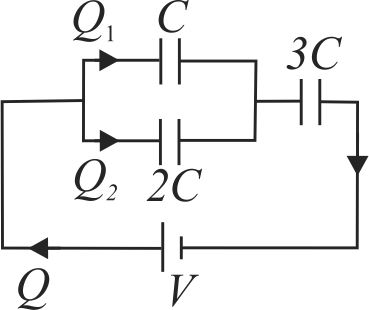359276 An electrician requires a capacitance of \(6\mu F\) in a circuit across a potential difference of 1.5 \(kV\). A large number of \(2\mu F\) capacitors which can with stand a potential difference of not more than 500 \(V\) are available. The minimum number of capacitors required for the purpose is
359276 An electrician requires a capacitance of \(6\mu F\) in a circuit across a potential difference of 1.5 \(kV\). A large number of \(2\mu F\) capacitors which can with stand a potential difference of not more than 500 \(V\) are available. The minimum number of capacitors required for the purpose is
359276 An electrician requires a capacitance of \(6\mu F\) in a circuit across a potential difference of 1.5 \(kV\). A large number of \(2\mu F\) capacitors which can with stand a potential difference of not more than 500 \(V\) are available. The minimum number of capacitors required for the purpose is
359276 An electrician requires a capacitance of \(6\mu F\) in a circuit across a potential difference of 1.5 \(kV\). A large number of \(2\mu F\) capacitors which can with stand a potential difference of not more than 500 \(V\) are available. The minimum number of capacitors required for the purpose is
